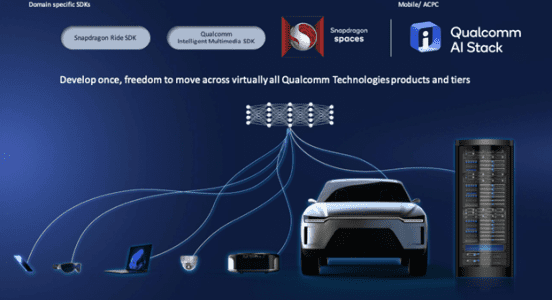Digital marketing is the new area of interest for organizations looking to drive a successful customer experience agenda. At CMR, our recent interactions with a majority of CMOs and marketing executives have confirmed that one of their top business priorities for 2019 will continue to be customer engagement.

Essentially, digital marketing involves designing customized marketing content and campaigns based on the customer’s behavioral attributes and preferences and delivering it over the online channel of the customer’s choice (such as search engines, social media, email, and company website). Armed with rich customer insights, organizations can effectively align their marketing efforts with the unique and changing customer’s dynamics and take more informed business decisions. Furthermore, organizations can exercise more process control across the customer’s journey and course correct in real time, thereby saving a potential business loss and offering a superior customer experience, thereby boosting customer retention and advocacy.
Digital marketing defines marketing success across customer’s journey
Digital marketing significantly enhances the affectivity and success of an organization’s marketing efforts by offering them real-time visibility into the customer’s movement and activities across the journey, helping them drive internal process changes, personalize content, target marketing campaigns and boost business growth.

By tracking the customer’s digital footprints across the journey, organizations look to benefit in the following ways:
- Improve customer understanding: A well-designed digital marketing strategy can help organizations to understand the way customer’s engage with their business at different points during their journey. For instance, armed with rich insights about the customer’s preferences and behaviors, organizations can effectively evaluate their current offerings, ascertain the tools and technologies required at each stage in the journey and drive infrastructure and process improvements to avoid or rectify causes of inconsistent experiences.
- Drive marketing success: Digital marketing aids in gauging the market response and affectivity of a marketing campaign instantly by tracking the customer’s activities and responses from the moment it is launched till customer conversion. Further, it can help uncover customer insights to extreme levels of depth, thereby helping organizations to prioritize and customize marketing efforts. Real time monitoring also enables organizations to optimize their marketing process, to be able to design and deliver the right solution to the customer, at the right moment and via their preferred medium.
- Positive impact on business outcomes: By going deeper into data pertaining to customer conversion and market response, organization can accurately link the impact of their marketing efforts on business goals. For instance, digital analytics solution traces the movement of users who have accessed a marketing message or content and have been converted into customers, thereby giving organizations a precise view of the success of the marketing campaign and quantifying its impact on overall business performance.
- Facilitate effective digital strategy formulation: Based on concrete customer data collected by tracing their digital footprint across the journey, organizations can more accurately calculate the return on investment (RoI) for each digital channel. This aids in driving effective strategy formulation around channel prioritization, thereby optimizing the organization’s existing resources and ensuring marketing success.
Business and market challenges deter adoption
Given the rise of the digital user, Indian organizations across industries are adopting a ‘digital-first’ strategy in every sphere of their business operations. However, with everyone targeting the same customer, the customer is spoilt for choices, thereby making the task of grabbing the customer’s attention and getting them to choose the organization’s offering over competitor’s increasingly difficult. Organizations today face many hurdles that threaten the success of their digital marketing initiatives.
- Growing number of digital channels adds complexity to the marketing process –Given the heavy investments being made in building a robust digital infrastructure across the country, internet adoption and usage has significantly grown in the recent past. As per industry reports, digital user base stood at a strong 34% in January 2018, up from 26% in 2015. In particular, digital usage across different communication channels has surged. For instance, 32% of the Indian population accesses the internet through mobile devices and 19% are active on social media platforms. The emergence of a variety of digital platforms that are being used by customers to engage with organizations is forcing the latter to adopt a multi-channel marketing approach. This can prove to be costly and cumbersome as organizations now need to design, strategize, implement and measure success of their marketing efforts across each of the digital channels.
- Large data volumes pose challenges –A by-product of digital usage is large amounts of data pertaining to customer demographics, behaviors, preferences and transactional history. Naturally, as digital usage and grows, manageability, accessibility and processing of all this data poses a challenge to organizations. To add to this complexity, most data in an organization resides and is consumed within business silos, thereby undermining the true value of the customer data and inhibiting the organization to leverage it to achieve business outcomes.
- Collaboration between internal and outsourced teams causes conflicts – Given the large and growing number of digital communications channels today, most organizations prefer to adopt a mixed channel strategy where a few digital channels are managed by the in-house marketing team and others are outsourced to specialized agencies. Since none of the digital communications channels can operate in isolation in today’s connected world, conflicts of interest may arise between these two parties, seriously hindering the organization success in their digital marketing endeavor.
Recommendations
To be successful in their digital marketing agenda, organizations need to strengthen and tightly integrate their technology platforms and processes so that to the customer, all the digital communication interfaces seem to be an extension of each other, offering personalized content and messaging in realtime, consistently across all touchpoints. Organizations must consider the following steps while designing their digital marketing framework:
- Construct a holistic view of the customer – Organizations must follow a two phased approach to customer research. Firstly, they must cull out rich and meaningful insights by comparing behavioral and transactional attributes of customers in the same segment to highlight segment-specific trends and patterns. Secondly, they must delve deep into customer-specific data to reveal personal and hidden aspects of their personality such as preferences and aspirations, to customize their offerings that meet and exceed customer expectations.
- Proactively design and deliver customized experiences – Organizations can use insights from customer research to determine the shortfalls in their existing marketing framework and drive remedial measures. It also provides them with an opportunity to truly delight the customer by preempting the causes of poor or inconsistent experiences and rectifying them even before the experiences are delivered. Further, organizations must tailor the 4P’s of marketing – Price, Promotion, Product and Place for each individual customer, so as to design and deliver personalized experiences, instead of just content.
- Ensure seamless transition between touchpoints – Customers frequently move between digital touchpoints while conducting a particular task and so must enjoy the flexibility to transition between communication channels in minimal time and without any hiccups. In such a scenario, organizations need to ensure that all their channels are tightly integrated with each other and with the backend infrastructure so that the customer’s information and content flows smoothly and swiftly between them.
- Enable consistent experiences across interfaces – Organizations must ensure that their content and messaging is compatible on all their digital touchpoints. To do so, they must invest in designing the user interface and content framework for each access device and communication channel, so as to ensure that the customer get the same look and feel and features across all communication mediums.














